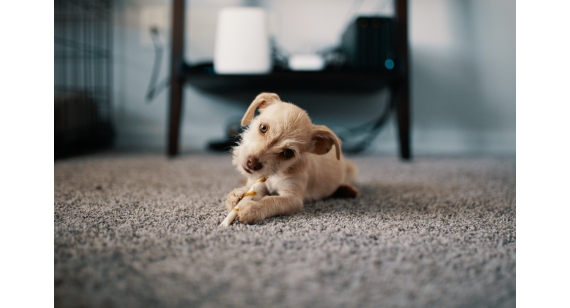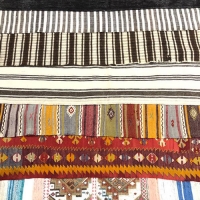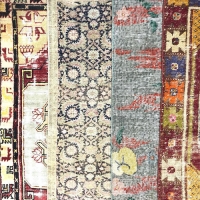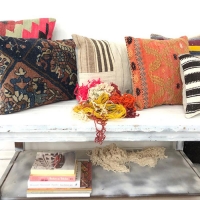
How to take care of your handmade carpets
Quality Handmade rug is an investment. If you have spent a decent amount of money or planning to buy a piece of art, you should take proper care of it, with just a little bit of care you can enhance your rug’s life by 50+ years.
Here are some important points.
1. Vacuuming
In almost all instances, regular vacuuming of an Oriental rug with an electric vacuum cleaner is good for the rug. A dirty rug wears prematurely, and regular gentle vacuuming helps prevent dirt on the surface of the rug from filtering down into the pile where it can accumulate and cause increased wear. Still, be careful with a cleaner equipped with a power brush or “beater bar”, these powered brushes in the vacuum head helps the vacuum to do a good job on machine-made carpeting, but they cause a raking effect on the top layer of an Oriental rug‘s pile if used too strenuously. For routine cleaning, use just the plain vacuum nozzle. This is especially important for fringes; try not to run an upright vacuum or a power brush attachment over the fringes. The brush shreds the fringes and causes rapid wear. Frequently fringes get caught and chewed up by the rotating mechanism of the brush and hence try to vacuum along the nap of the rug.
2. Rotating
Rotate your rug as often as possible, at least every 3 to 6 months. Do this more often if you notice that the high traffic areas of your rug are starting to appear dirty, or if the nap has lost its original direction or shape. Also, rotate your rugs according to the amount of direct sunlight they receive as overtime, direct sunlight can fade the dyes of your rugs. By rotating your rugs it will allow them to wear more evenly, which helps them to maintain their original appearance and value.
3. Padding
Having pads under the rugs can prevent sliding of the rugs, prolongs the life of the rug by cushioning the impact between shoe sole and the hard floor surface, and also provides comfort while walking over it. Now the question is to determine if you need a pad? The rule of thumb is: a heavy thick rug does not necessarily need one, whereas a thin, soft rug does, as does an older rug or a rug that has been rewoven or patched or which has a weakened foundation. A pad should be about an inch smaller in size than the rug so that the pad will not be prominently seen.
4. Spot Cleaning
In case of a food spill, the spot should be treated promptly before the spill dries out. Always try to work on the spill spot rather than brushing it for the spill spot to spread around. Blot up as much liquid as possible with paper towels or a clean white cloth. Try to rinse out as much of the spill as possible. If necessary, use a tablespoon to scrape up all the material. Blot the area dry and immediately sponge several times with rug shampoo or with the cleaning solution made from a mixture of 1/4 cup white vinegar,1/2 tsp liquid dishwashing detergent and 2 cups tepid water. Don’t scrub too hard too much manipulation of the pile can spread the stain. Make sure that you sponge in the direction of the nap.
Most Oriental rug dyes are acid reactive. However if you add a little white vinegar to the solution you will make the solution more acidic, and this reinforces the bond between the dye and the wool in the rug also helps prevent the colors from wearing away.
Finally, sponge the area with cool and clean water. Use absorbent towels or a firm, non-shedding sponge. Don’t use a brush stiffly that it pulls out the fibers from the pile. Don’t scrub the pile too harshly. Place some towels under the spot to keep the floor or pad from getting wet and then let it dry thoroughly. When the nap feels dry, check the back of the rug to see if the area is completely dry.



